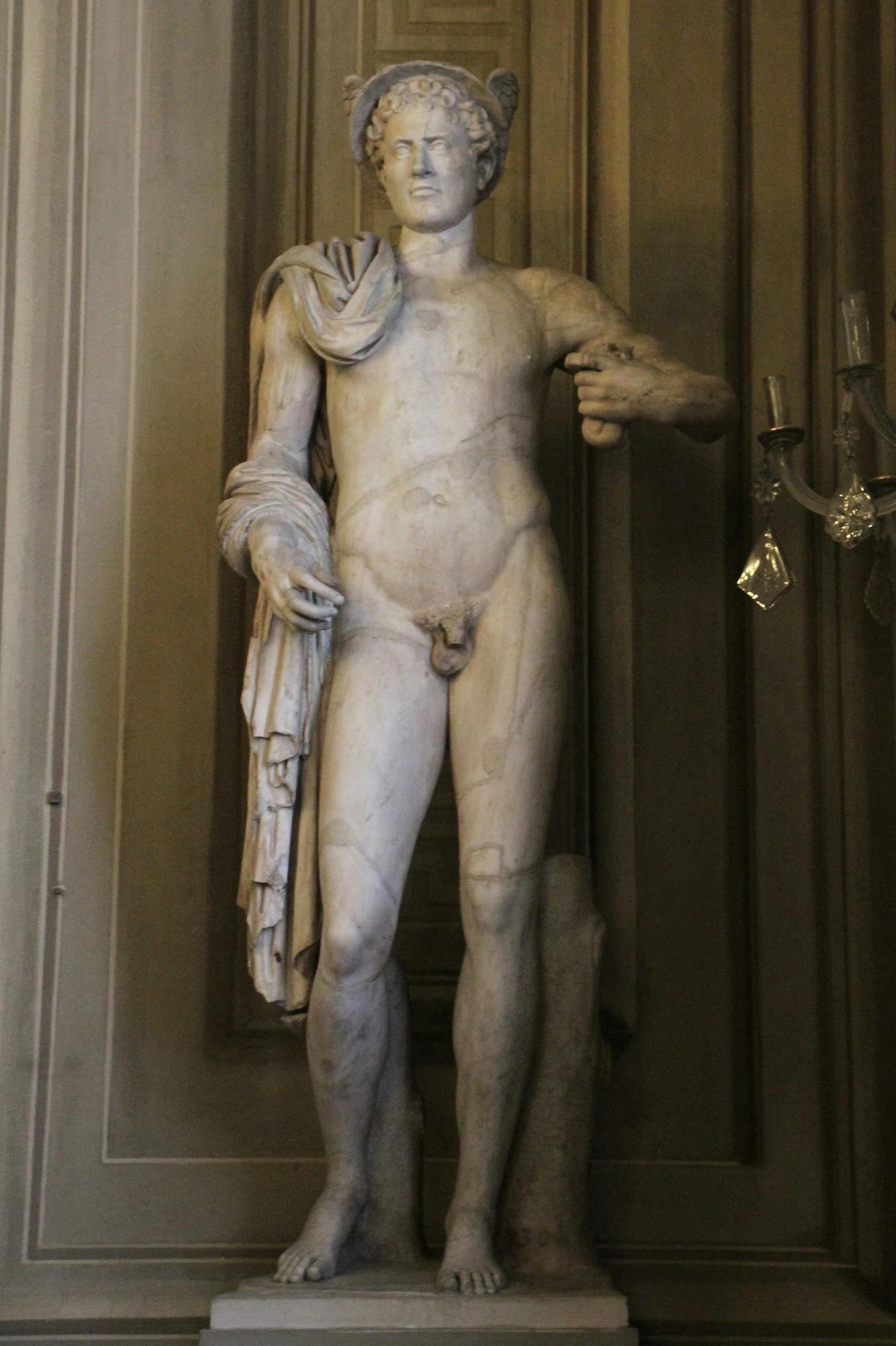Mercury with pétasos
This statue, previously in the Uffizi Galleries, shows numerous replacements of lost parts, as well as significant interventions to reattach parts that belonged to the original. Although the head is ancient, it is not certain whether it comes from the figure itself or if it is a case of old material being re-used - a popular practice in 16th and 17th centuries: the strong marks of reworking on the bottom part of the face, lead us to suppose that it originally sported a beard, eliminated perhaps because it was greatly damaged or to bring the face into line with the younger character of the nude.
The restoration work, carried out on the marble in modern times, significantly changed the original figure, which most probably did not depict Mercury, but simply a naked man with a cloak (known as a clamide) draped over his shoulder, as was rather common in Greek art during the 4th century B.C. During the Roman period, the cloak was used when depicting divinities and heroes, divinised emperors and simple individuals, as in the case of this bearded figure.
To transform the statue into an image of the god who protects travel and commerce is the addition - by the restorer/sculptor - of a significant detail: the pétasos, a hat with Macedonian origins, frequently used in depictions of Hermes, and passed down from ancient Greece and Rome on painted vases, walls and also on sculptures. Hermes’ task as messenger of the gods is often emphasised - as it is here - with the addition of small wings on the sides of this hat.
The surface workmanship would seem to suggest a general date of the 2nd century A.D. which, in terms of the head, could be more exactly dated to the Antonine period due to the rendering of some details, such as the richly chiaroscuro workmanship on the hair, the use of engraved irises with deep pupils, and the expression on the face, barely lined by the creased brows.
E. Polito in G. Capecchi, D. Heikamp, A. Fara, V. Saladino, Palazzo Pitti. La reggia rivelata, Catalogo della mostra (Firenze, Palazzo Pitti, 7 dicembre 2003-31 maggio 2004), Firenze 2003, p. 584, n. 135
